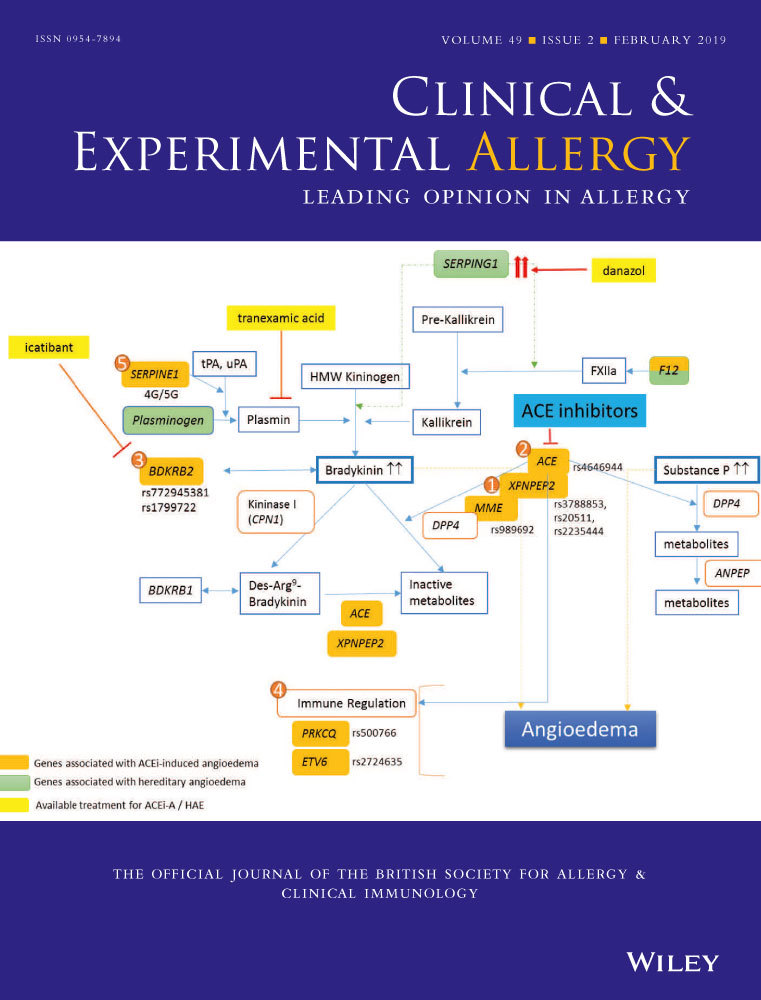Potential cofactors in accidental food allergic reactions are frequently present but may not influence severity and occurrence
Abstract
Background
Cofactors, such as physical exercise and alcohol intake, might be associated with the severity or occurrence of food allergic reactions.
Objective
To gain insight into the frequency of presence of potential cofactors in accidental food allergic reactions in adults and to what extent these factors influence the severity and occurrence of allergic reactions.
Methods
A prospective cohort study was conducted, with a 1-year follow-up in adult patients with a physician-diagnosed food allergy. Patients were required to fill in a questionnaire after every accidental allergic reactions to food over a 1-year period. The primary outcome measure was the frequency that potential cofactors were present in these allergic reactions.
Results
A total of 157 patients were included, of which 46% reported a total of 153 reactions during a 1-year follow-up period. In 74% of the reactions, ≥1 potential cofactor was reported to be present: tiredness (38%), alcohol intake (16%), stress (14%), symptoms of pollinosis (16%), symptoms of asthma (9%), sickness/flu (3%), physical exercise (3%) and use of analgesics (2%). More than one potential cofactor was reported in almost half of all reactions (47%). There was no significant difference in the presence of these factors between mild, moderate and severe reactions (P = 0.522). In the total study population, 9% of the patients used medication that might act as cofactor (antacids, angiotensin receptor blockers [ARBs], beta blockers and angiotensin-converting enzyme inhibitors [ACEIs]) on a daily basis, which however did not influence the occurrence of reactions. Furthermore, 38% daily used allergy-suppressing medication.
Conclusions
Although factors suggested to be cofactors were frequently present during accidental food allergic reactions, we found no evidence for an association between the potential cofactors examined and reaction severity, in a population where most reactions were of mild to moderate severity.
CONFLICT OF INTEREST
The authors declare no conflict of interest.




